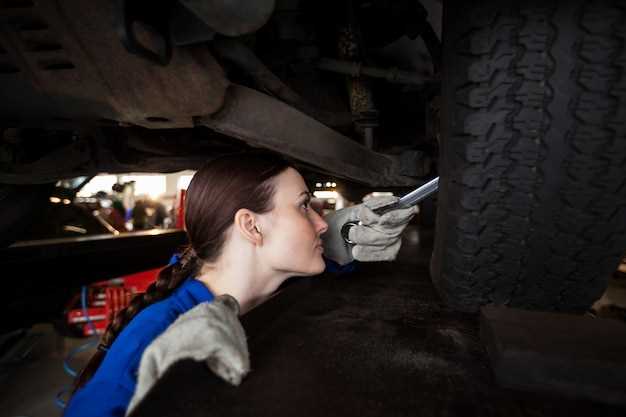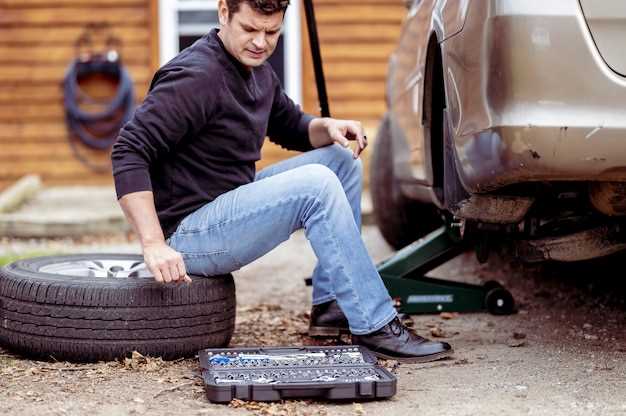
Owning a Jeep can be an exhilarating experience, but like any vehicle, it comes with its own set of issues. From electrical glitches to mechanical failures, understanding these common problems is essential for any Jeep owner. In this article, we will explore frequent Jeep issues that drivers encounter and provide DIY solutions to help you tackle these challenges head-on.
Whether you’re a seasoned mechanic or a novice DIY enthusiast, having a grasp on common Jeep problems can save you time and money. Many Jeep owners find themselves facing issues such as transmission troubles, suspension wear, and electrical malfunctions. By being informed about these common pitfalls, you can proactively maintain your vehicle and even resolve minor issues before they escalate.
This guide will not only highlight typical Jeep problems but also empower you with practical solutions. Remember, having the right tools and knowledge can make a significant difference in your Jeep ownership experience. Let’s dive into the common issues and discover how to effectively resolve them through simple DIY methods.
Overheating Problems and Quick Fixes

Overheating is a common issue faced by Jeep owners, often resulting from various underlying problems. Identifying the cause of overheating is crucial for effective resolution. Here are some typical reasons and diy solutions to address these jeep issues.
1. Low Coolant Levels
One of the most frequent causes of overheating is insufficient coolant. Regularly check your coolant levels, especially before long trips. If you find low levels, top off with the appropriate mix of coolant and water. Also, inspect for any leaks in hoses or connections that may need repair.
2. Faulty Thermostat
A malfunctioning thermostat can prevent coolant flow, leading to overheating. If your jeep overheats consistently, remove the thermostat and test it. If it fails to open in hot water, consider replacing it as an effective low-cost diy fix.
3. Radiator Blockage
Debris and buildup can obstruct the radiator, reducing its ability to dissipate heat. To clean the radiator, flush it with water or a radiator cleaner, ensuring you remove any grime. This simple maintenance task can significantly improve cooling efficiency.
4. Water Pump Failure
A failing water pump can hamper the circulation of coolant throughout the engine. If you notice leaks or hear unusual noises from the pump, it may need replacing. This repair is manageable for those comfortable with basic tools and understanding of their jeep’s cooling system.
5. Worn or Damaged Belts
Belts that drive the water pump can wear out over time. Inspect your serpentine or drive belts for signs of fraying or cracking. Replacing worn belts is a quick diy job that can prevent further cooling issues.
6. Radiator Fan Issues
An inoperative radiator fan can lead to overheating during idle or low-speed driving conditions. Check the electric fan for proper function. If it doesn’t operate, investigate electrical connections and consider replacing the fan or its motor.
By following these guidelines, Jeep owners can tackle overheating problems efficiently. Regular maintenance and awareness of potential issues will not only enhance your driving experience but also extend the life of your vehicle.
Transmission Issues: Diagnosis and DIY Solutions

The transmission system in a Jeep is crucial for smooth gear shifting and overall performance. However, it can face various issues that may affect driving experience. Understanding these issues and implementing DIY fixes can help maintain your vehicle’s efficiency.
Common Transmission Issues:
Several signs may indicate transmission problems. These include:
- Slipping gears
- Delayed engagement
- Unusual noises while shifting
- Fluid leaks
- Overheating
Diagnosis:
To diagnose transmission issues, start by checking the transmission fluid level and condition. Low or dirty fluid can lead to poor performance and should be addressed promptly. Look for any visible leaks under the vehicle, as this could indicate a problem that needs immediate attention.
Additionally, observe any warning lights on the dashboard that may signal transmission malfunctions. Use an OBD-II scanner to retrieve error codes, which can provide insights into specific issues.
DIY Fixes:
If you identify transmission problems, several DIY solutions can help:
- Fluid Change: If the transmission fluid appears dark or contaminated, perform a fluid change. Ensure you use the correct type specified in your Jeep’s manual.
- Top Up Fluid: If the fluid level is low, add fluid as needed. Always check for leaks after adding fluid, as this may indicate a more serious issue that requires professional help.
- Transmission Filter Replacement: A clogged filter can lead to poor performance. Replacing the transmission filter can help improve functionality and extend the life of your vehicle.
- Adjusting Linkage: If experiencing gear slippage, check and adjust the transmission linkage if necessary. A misaligned linkage can affect the shifting process.
Before undertaking any DIY fixes, always refer to your Jeep’s service manual for specific instructions and safety precautions. By being proactive and addressing transmission issues early, you can save time and money while ensuring your Jeep remains in optimal condition.
Electrical Failures: Common Symptoms and Repair Tips
Electrical failures in your Jeep can manifest through various symptoms, making it crucial to recognize and address them promptly. Common signs include malfunctioning headlights, issues with the ignition system, and problems with power windows or locks. These can indicate deeper electrical issues that need to be resolved to ensure your vehicle operates efficiently.
One of the first symptoms you may notice is flickering or dim headlights. This can often be caused by a weak battery or a failing alternator. To DIY fix this issue, start by checking the battery terminals for corrosion and ensuring a secure connection. If the battery is more than three years old, consider testing its voltage. A reading below 12.4 volts may signal the need for replacement.
Another frequent electrical problem is related to the ignition system. If your Jeep struggles to start, it could be an indication of faulty ignition coils or a malfunctioning starter. A simple DIY approach is to inspect the spark plugs for wear. If they are damaged, replacing them might resolve starting issues. Additionally, ensure all connections to the starter are clean and secure.
Power accessories such as windows or locks may also experience electrical failures. If you find that your power windows are non-responsive, the window switch might be faulty. To diagnose this, check the fuses related to the power window circuit. If the fuse is blown, replace it and test the switches again. If issues persist, consider disassembling the switch to ensure proper electrical contact.
For more complex electrical issues, such as those involving the vehicle’s computer system, it may be necessary to use an OBD-II scanner to retrieve diagnostic trouble codes. These codes can provide valuable insights into electrical malfunctions, guiding you towards a more effective resolution.
In summary, electrical failures in a Jeep can present various symptoms that are often manageable with DIY repairs. Regular maintenance, including battery checks and fuse inspections, can help prevent many issues. When in doubt, consulting with a professional or utilizing an OBD-II scanner can assist in fixing more complex problems.




